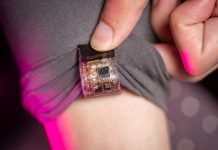
Imagine tiny robots exploring the depths of the ocean, riding on underwater waves like surfers catching the perfect break.
These small, autonomous underwater vehicles, known as CARL-Bots, are being developed by Caltech scientists to study the ocean in new and energy-efficient ways.
Traditionally, navigating the swirling currents of the ocean is a big challenge for these little bots.
Powerful underwater currents can easily push them off course, wasting energy and making it hard to explore deep waters.
To solve this, Caltech scientists, led by Professor John Dabiri, have taken inspiration from jellyfish. Jellyfish are experts at moving through water without much effort, using natural currents to drift gracefully.
Dabiri and his former graduate student, Peter Gunnarson, wondered if robots could do the same. The idea is simple: instead of fighting against underwater currents, why not use them to move around more easily?
This led them back to a robot named CARL-Bot, originally built to experiment with artificial intelligence in underwater navigation.
However, Gunnarson found a simpler way to guide the bot without complex AI. He attached a thruster to a large water tank in Dabiri’s lab to create vortex rings—think of them as underwater smoke rings.
These swirling rings are similar to the chaotic currents found in the ocean. As CARL-Bot moved through the tank, Gunnarson noticed that sometimes it would catch a ride on these vortex rings and be carried smoothly across the water.
This discovery sparked an idea: what if CARL-Bot could intentionally hop onto these vortex rings instead of fighting against them?
With some simple commands and a single accelerometer (a sensor that measures movement), CARL-Bot learned to detect when a vortex ring was nearby and position itself to ride the current.
It was a bit like a surfer spotting the perfect wave and paddling just in time to catch it. If the vortex ring wasn’t going in the right direction, CARL-Bot could simply move out of its path.
This approach mirrors how birds soar with strong winds or how fish sometimes allow ocean currents to carry them to conserve energy. But while birds and fish rely on complex senses and a brain to make these decisions, CARL-Bot does it with just one simple sensor.
The next step for Dabiri and his team is to try this technology with their “bionic jellyfish”—real jellyfish fitted with tiny electronic hats. If successful, these jellyfish could navigate ocean currents more effectively, turning them into efficient, energy-saving explorers of the deep sea.
The team’s findings were published in PNAS Nexus, with hopes of opening new doors for underwater exploration, making it more efficient and less energy-intensive.
With nature as their guide, these tiny robots may soon be surfing the hidden waves of the ocean like never before.
Source: Caltech.



